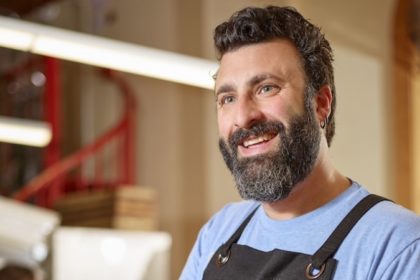
To the food and drink industry, regulators can sometimes feel like “the bad guys.” But to scale a fermentation brand, sell artisanal products at a farmers market, or serve dishes with fermented ingredients in a restaurant, producers need regulators to be friends or colleagues, says Jeremy Umansky, owner of Larder Deli and author of “Koji Alchemy.”
“As a fermented food producer, it’s a frustrating and almost difficult, like an intimidatingly difficult place to be in. Because there’s really no great resources of where to start, how to get going, how to do what you’re going to do in the safest manner possible while also maintaining a specific quality standard which is so important for us,” says Umansky. “We need to have open, honest conversation (with regulators). If your local regulators aren’t willing to work with you or just want to shut it down because they don’t understand, go up to the next level. Go up to the county, to your state or even reach out to federal. Because people are producing these foods all over the country, so there is regulation for them.”
Umansky spoke with Drew Anderson, CEO of Cleveland Kitchen, during a Fermentation Association webinar titled “Coping with Regulations (and Regulators).”
When Anderson started Cleveland Kitchen with his brother and brother-in-law, “the regulators didn’t really know how to handle fermented food.” They decided to become close with their representative from the Ohio Department of Agriculture and call her first when they moved to bigger facilities or added onto the facility. “She is fantastic. You involve the regulators into your process.”
“You’ve got to understand, when (regulators) go out, they know people don’t like them, they know they’re the enemy when they walk in that kitchen,” Anderson adds. “So if it’s a pleasure to work with you and they can see that they’re actually helping someone, that always helps. Food is still a people business. I think it’s important to be close.”
“It’s funny because the human race has been doing this for thousands of years and we never worried about it before. But now, in this modern age, everything has to be pasteurized.”
Fermenting was common in America before the 1920s, when electricity and refrigeration became a standard in homes. Today, with current food safety laws, “our regulation is more or less a mess,” Umansky notes.
“Anywhere you go in the world, for the most part, fermented foods are the crux at the root of any cuisine,” Umanksy says. “People have relied on these foods and the methods of making them for so, so long. And it’s interesting now that we have so much fear and intimidation and kind of unknowing about (fermented food) production and how they’re made and if they’re safe or not when we’ve kind of proven that society would not exist as it does if it weren’t for these foods prior to refrigeration.”
Both Cleveland Kitchen and Umansky’s Larder Deli are based in Cleveland. However, because Larder and Cleveland Kitchen produce and sell fermented foods differently, they are regulated by different associations. Larder is overseen by the city health department, and Cleveland Kitchen is overseen by the state health department.
“From locale to locale and oversight body to oversight body, things are different,” he says. “We’re both producing fermented foods, but because of how we’re producing them, where we’re producing them, and where we’re selling them, we have different sets of regulations. Same foods, different sets of regulations. And when you talk to different people, you get different answers.”
“Where is the regulation? It’s a mess. It’s almost impossible to keep up on it,” Umansky says.
There is not a standardized food code in all 50 U.S. states. Rules for retail food production varies from cities, counties and states. At the extreme opposite is Japan, where open-air food markets sell fermented foods with little government oversight over food producers.
“We have to be able to address this issue of there not being cohesion and they’re not being easily accessible information for those of us producing these types of food,” Umansky says. “It begs the question – why haven’t we taken a model from the Japanese or the Chinese? Or Scandinavian cuisine is very, very fermentation forward, Eastern European cuisine. Why haven’t we looked at their regulations?”
HACCP is another regulation setback for fermented food and drink producers. Hazard Analysis Critical Control Points (HACCP) are required plans that monitor food safety. But HACCP requires producers to make one thing the same way all the time. There is no room for variances in ingredients. It works for big, commercial producers.
“For smaller restaurants and craft producers, it’s essentially improbable,” Umansky says.
If there’s a menu change at a restaurant or a new ingredient source for a craft producer, technically a new HACCP plan is required.
Umansky recommends, when filing a HACCP, producers should pick one thing on the menu that will never change or that is always in stock. At Larder, it’s the pastrami sandwich with sauerkraut. Then, when it’s time to meet with a regulator, request someone familiar with craft food and come prepared with a HACCP covering the unchanged menu dish or stocked item.
“Your regulators will be so socked that you’ve already taken that step and they haven’t had to have this conversation with you,” he said. “The great thing is, in non-pasteurized fermented foods, I don’t even think there’s any reported cases of botulism associated with fermented foods. It can’t survive. There’s salt and acid.”
Check out the full video link here.
